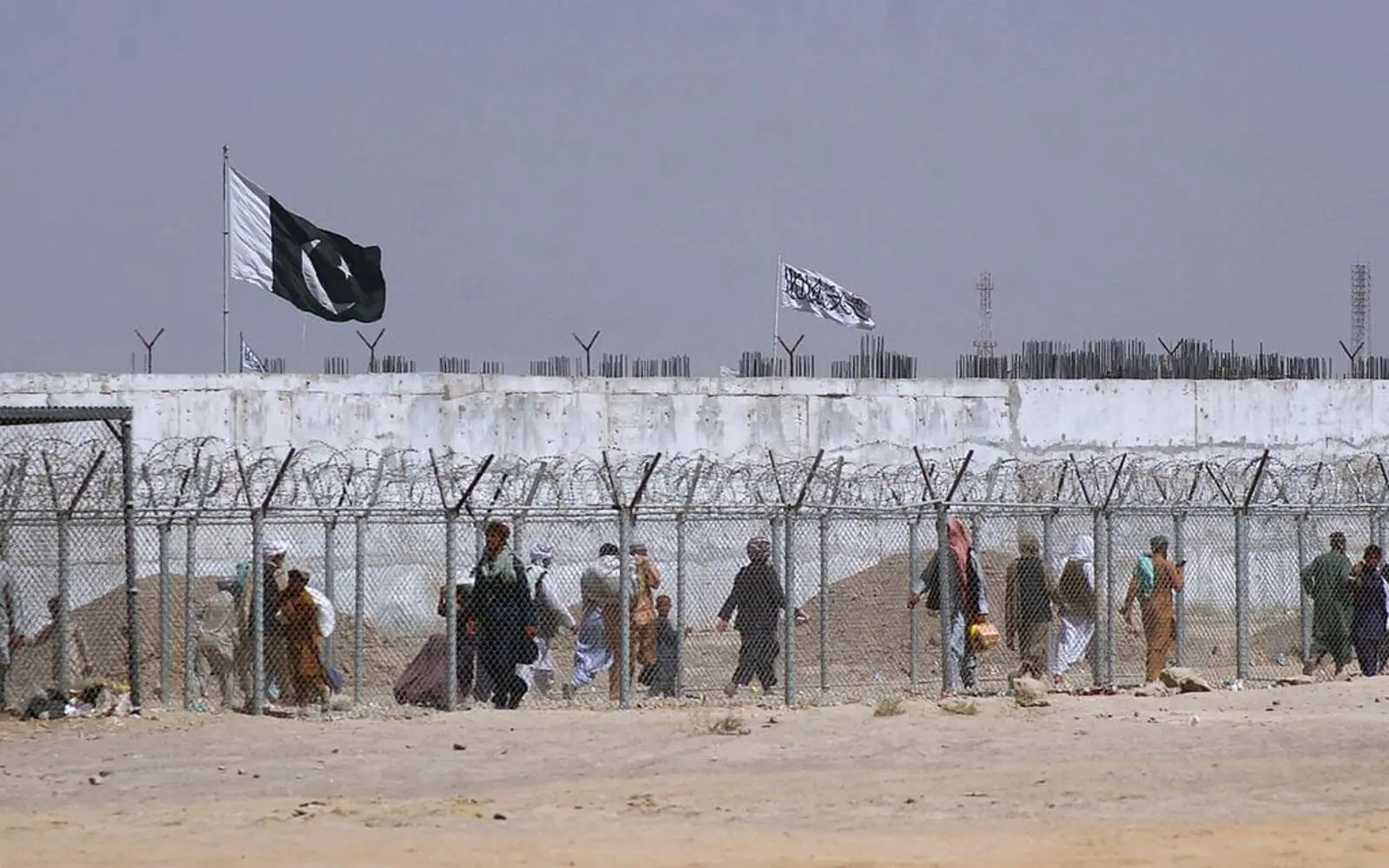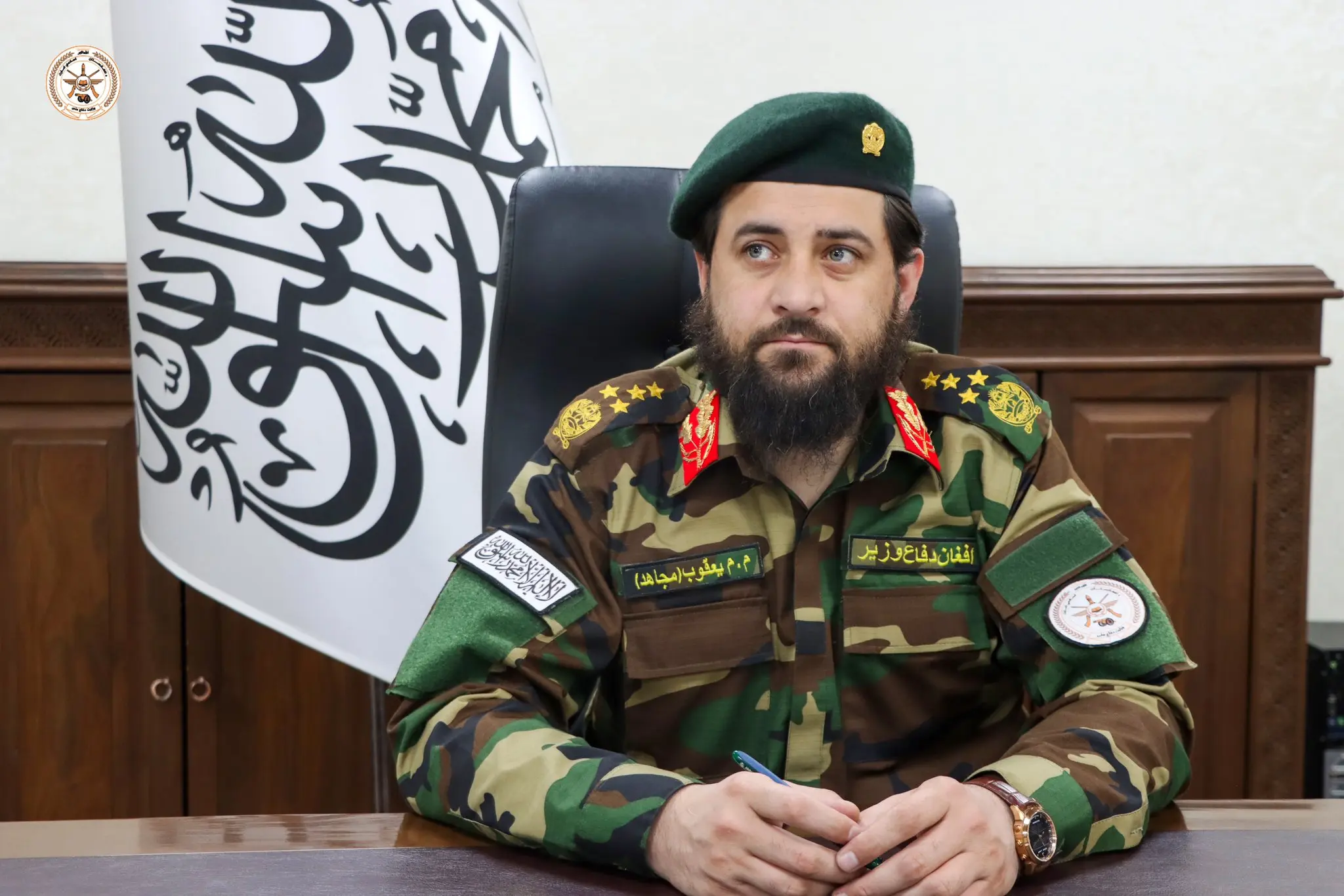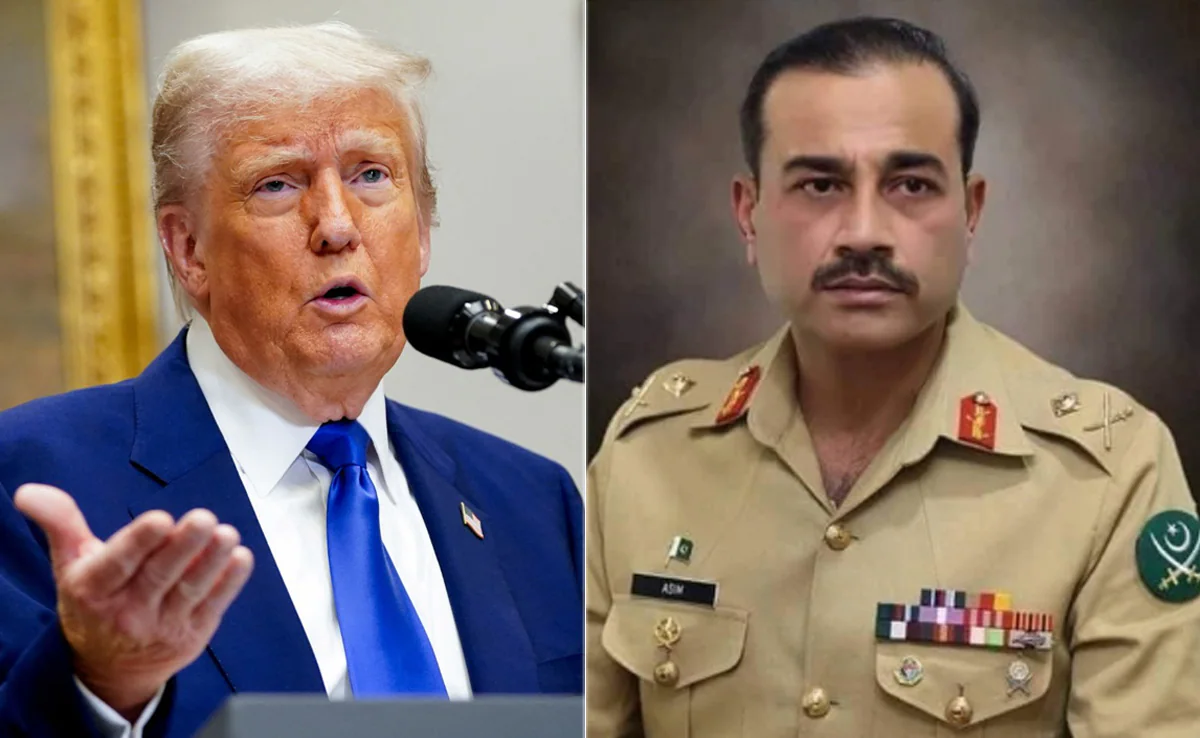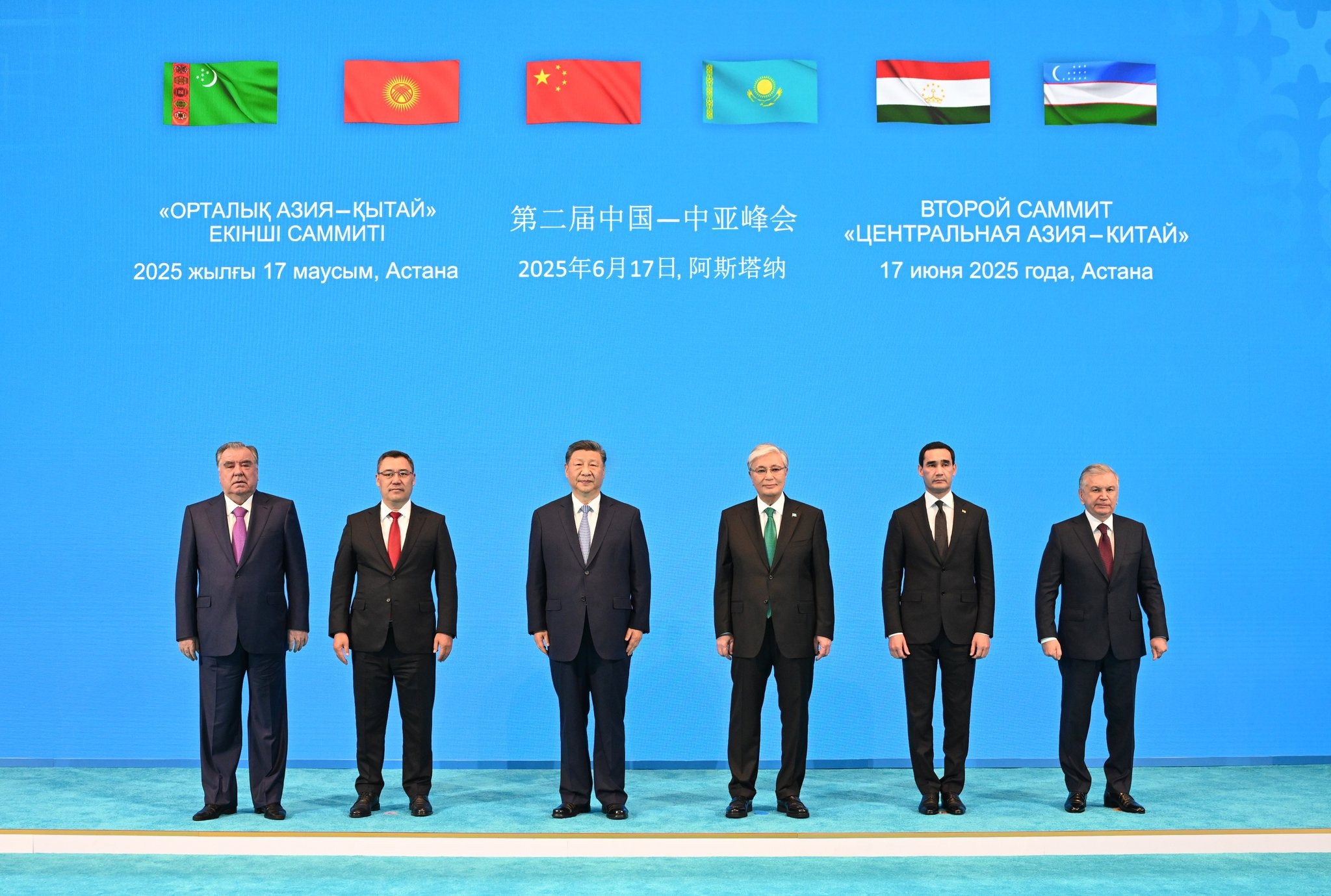Asia
Cross border aggression: Souring tensions between Afghanistan and Pakistan

At least eight people, all of them civilians, including three children and five women, lost their lives in Pakistani airstrikes in two bordering provinces of Afghanistan on March 18. Pakistan Air Force jets bombed residential areas in the Lamana area in Spera district in Khost and the Barmal district of Paktika around 03:00 am local time and the airstrikes come two days after a terror attack by the Pakistani Taliban claimed the lives of seven Pakistani soldiers in Waziristan.
The caretaker government of the Taliban has strongly condemned Pakistani airstrikes and vowed to respond and avenge the killing of innocent Afghans.
According to the Taliban statement, six civilians were killed in Paktika and two more in Khost province and considered the attack as a clear violation of Afghanistan’s sovereignty and an invasion of the country’s territory.
“Pakistan should stop blaming Afghanistan for its inability to manage security incidents within its borders,” the statement reads and re-emphasized that they will not let Afghanistan soil to be used against any other countries.
The latest escalation is likely to further increase tension between the two neighboring countries, Afghanistan and Pakistan.
Pakistan claimed it has targeted TTP commander
Pakistani media has reported that the airstrike was aimed to target members of the Tehreek-e-Taliban Pakistan (TTP) in Khost and Paktika provinces. However, it is not clear how deep inside Afghanistan the Pakistani jets flew and it’s the second airstrike since 2022 when Pakistan targeted militant hideouts in Afghanistan but the Pakistani military has never officially confirmed those attacks.
This also comes days after seven Pakistani military personnel, including two officers were killed after suicide bombers targeted their security post following exchange of heavy fire in the northwestern Khyber Pakhtunkhwa province.

Pakistan and Afghan security forces exchanged heavy fire on Monday morning following the launch of Pakistan Air Force cross-border aerial strikes in Afghanistan.
The incident took place early Saturday morning, and just within some hours, a group of six militants attacked a security post in the Mir Ali area of North Waziristan tribal district. The attack has been foiled by the Pakistani security forces, the Pakistan’s media wing said in a statement.
The statement furthered; “The terrorists rammed an explosive-laden vehicle into the post, followed by multiple suicide bombing attacks, which led to the collapse of a portion of a building, resulting in “martyrdom” of five soldiers.”
During the intensive exchange of fire between force and militants, two army officers, Lieutenant Colonel Syed Kashif Ali and Captain Muhammad Ahmed Badar, were killed, the statement added.
TTP commander Abdullah Shah is alive and he is Pakistan
However, the Pakistani army had claimed that they had targeted TTP commander Abdullah Shah in Afghanistan with the airstrikes. However, this has been turned wrong.
Soon after Pakistan, Shah, the commander of TTP, released a video refuting the claim and said that he is alive and currently living in Waziristan of Pakistan.
“It is all propaganda. Today is the 18th of March and I am right now in Nort Waziristan and alive. We have not moved anywhere from here and we are here in Waziristan since the beginning,” Shah said in the video clip.
Taliban denies charge sheltering TTP
Pakistan has time and again accused Afghanistan for failing to prevent militants from TTP from carrying out attacks in Pakistan. Pakistan also asked the Afghan government to stop sheltering the TTP leaders, an accusation that the Afghan government rejected in the strongest terms. The Afghan government under the Taliban leader has always denied sheltering the TTP and reaffirmed its commitment not to allow its soil to be used against any country in the regional countries.

Afghan Defense Ministry Mujahid has appeared in a military uniform for the first time after Pakistani airstrikes.
The Taliban acting defense minister, Mullah Yaqoob Mujahid had instructed the Afghan security forces to respond to the Pakistani airstrike through rockets.
Afghan forces targeted areas within Pakistan’s jurisdiction in KP
Under his directive, the Afghan forces had initiated artillery barrages from the Dand-e-Patan district of Paktia proivnce and targeted areas within Pakistan’s jurisdiction in Khyber Pakhtunkhwa (KP). Videos from the site have been circulating on social media, showing Afghan forces using the BM-21, a self-propelled 122 mm multiple rocket launcher in the ongoing exchange of fire.
Afghan defense minister in military uniform for the first time
Defense Ministry has published a picture of Mujahid, who appeared in a military uniform for the first time after Pakistani airstrikes, and the ministry in a statement in X said that in response to this aggression, the border forces of the National Army of Afghanistan targeted Pakistan’s military center along the Durand Line with heavy weapons.
“The Afghan security forces are committed to protect their land under all circumstances and claim that they have destroyed two security posts of the Pakistani army. Afghan foreign ministry also summoned Pakistani ambassador to Kabul and handed over its protest letter and strongly condemned Pakistani airstrikes in Khost and Paktiak provinces.
But now the situation has become normal and the Taliban spokesman Zabihullah Mujahid said that the situation in the bordering area is calm and the fighting has stopped.
Asia
Japan diverges from G7, urging restraint in Israel-Iran conflict

Japanese Prime Minister Shigeru Ishiba has affirmed Tokyo’s position of calling for “maximum restraint” from both Israel and Iran, despite a G7 statement earlier this week that supported Israel’s “right to self-defense.”
During a meeting of ruling and opposition party leaders on Thursday, Ishiba stated, “What the foreign minister said is the stance of the Japanese government. The G7 is the G7,” as reported by Tomoko Tamura, head of the Japanese Communist Party.
Japan, a close US ally in Asia, has long maintained friendly relations with Iran and has historically adopted a neutral approach to Middle East diplomacy, distinguishing itself from the pro-Israel stance of US administrations. Tokyo relies on the Middle East for the overwhelming majority of its crude oil imports.
G7 leaders convened in Kananaskis, Canada, and issued a statement backing Israel’s attacks on Iran. The statement affirmed Israel’s right to self-defense and condemned Iran as the “main source of regional instability and terrorism.” On June 13, when Israel’s attacks on Iran began, Japanese Foreign Minister Takeshi Iwaya declared: “The use of military force while diplomatic efforts are ongoing… is completely unacceptable and a source of deep regret. The Japanese government strongly condemns these actions.”
Iwaya added, “Japan is gravely concerned about the continuation of retaliatory attacks and strongly condemns any actions that could further escalate the situation.”
He continued, “Japan urges all parties to exercise maximum restraint and strongly calls for a de-escalation of tensions.”
During the meeting of party leaders, Tomoko Tamura, head of the Japanese Communist Party, highlighted the apparent contradiction between Iwaya’s statements and the joint G7 communiqué, suggesting the government was applying a “double standard.”
Prime Minister Ishiba responded, “What the foreign minister said is the stance of the Japanese government. The G7 is the G7.”
Meanwhile, the foreign minister announced at a press conference on Friday that a total of 87 Japanese nationals and their family members had been evacuated by land from Iran and Israel. Sixty-six individuals were evacuated from Iran to neighboring Azerbaijan, and 21 were evacuated from Israel to Jordan.
Following additional requests from Japanese citizens, a second land evacuation from Iran is scheduled for Saturday. Currently, there are approximately 220 Japanese nationals in Iran and about 1,000 in Israel.
In preparation for potential air evacuations, the government plans to dispatch two Air Self-Defense Force military transport aircraft to Djibouti in East Africa to have them on standby. With airports in Iran and Israel closed, Iwaya noted that the aircraft could be used if, for example, the airports reopen and conditions permit an airlift.
Asia
Iran-Israel war: Why US discusses regional conflict with Pakistan

US President Donald Trump and Pakistan’s Army Chief General Asim Munir held a special and important meeting during a time when tensions are rising in the Asian region. The meeting was held on Trump’s invitation and was not open to the media. However, both sides have released official statements afterward, which states that the main topics were discussed
The meeting focused on the ongoing conflict between Iran and Israel, Pakistan–India relations, especially the Kashmir issue, the situation in Afghanistan and future US–Pakistan cooperation.
Pakistan has recently improved its strategic position in the region. It has shown strong ties with China and is the only South Asian country openly supporting Iran in its conflict with Israel. Meanwhile, Pakistan remains an important player in Afghanistan.
Why the Pakistani Army Chief was invited to the US?
Although Pakistan has an elected civilian government, important decisions—especially related to foreign affairs and security—are often handled by the military. That’s why General Asim Munir was invited to meet Trump instead of the Prime Minister, General Munir’s influence has grown recently. After tensions with India, he was given the title of Field Marshal. His meeting with Trump is seen as a sign of his importance in both Pakistani and international politics.
According to the Pakistan Army’s media wing (ISPR): General Munir thanked President Trump for helping to ease recent tensions between Pakistan and India. Trump praised Pakistan’s role in fighting terrorism. Both agreed to work together in the future, especially in: Trade, Technology Minerals and energy Artificial intelligence Crypto currency and regional peace efforts as well.
President Trump also appreciated General Munir’s leadership during difficult times. Munir invited Trump to visit Pakistan, and Trump reportedly accepted the offer in principle.
Why US former peace envoy to Afghanistan, Khalilzad is not trusting Pakistan’s army chief
Former U.S. diplomat Zalmay Khalilzad criticized the meeting. He said General Munir cannot be trusted and reminded the U.S. that Pakistan has supported groups that harmed American soldiers in the past. According to Khalilzad, General Munir may be trying to get U.S. support for his interests in Afghanistan, which he believes could be risky for America.
Though no official list of US demands was made public, reports suggest a meeting was held in Saudi Arabia earlier, where American officials spoke with top Pakistani leaders. During that meeting, the U.S. reportedly made four key requests: Pakistan should help the U.S. in counterterrorism operations when needed. Pakistan should slowly reduce its relations with China. Pakistan should recognize Israel after Saudi Arabia does. If the U.S. attacks Iran, Pakistan should support the U.S. instead of staying neutral.
These demands are similar to earlier U.S.–Pakistan arrangements during the Cold War and the War on Terror.
What could be expected in the future?
This meeting could mark the beginning of a new phase in US–Pakistan relations. In the past, Pakistan helped the U.S. during the Soviet-Afghan War and after 9/11. Now, with tensions involving Iran, India, and Afghanistan—and China expanding its role—the U.S. may again be looking to Pakistan as a key partner in the region.
Time will tell whether this leads to a long-term partnership or just another temporary agreement based on short-term goals.
Asia
China pledges aid and signs friendship treaty at Central Asia summit

China concluded its latest engagement efforts in Central Asia on Tuesday by pledging 1.5 billion yuan (US$209 million) for livelihood and development projects in the region.
The six nations participating in the second China-Central Asia Summit also signed a historic permanent friendship treaty.
“China is ready to provide 1.5 billion yuan in grant assistance to Central Asian countries this year to support livelihood and development projects of common interest to each country,” Chinese President Xi Jinping stated in his opening address at the summit in Astana, the capital of Kazakhstan.
“Additionally, China will offer 3,000 training opportunities to Central Asian countries over the next two years.”
Xi described the signing of the Permanent Good-Neighborliness and Friendly Cooperation Agreement as a milestone in relations between the six countries, calling it “an innovative initiative in China’s neighborhood diplomacy and a contribution that will benefit future generations.”
China has signed similar agreements with Russia and Pakistan.
Xi also emphasized the need for cooperation in a world that has entered “a new period of turbulence and transformation.”
State news agency Xinhua quoted Xi as saying, “There will be no winner in a tariff and trade war. Protectionists and hegemonists will harm both others and themselves.”
“The world should not be divided, but united; humanity should not revert to the law of the jungle, but work to build a common future for mankind,” he added.
Xi also announced the establishment of three cooperation centers focusing on poverty reduction, educational exchange, and desertification control, as well as a trade facilitation platform under the China-Central Asia cooperation framework.
In a statement on Wednesday, the Chinese Foreign Ministry said that China and the Central Asian countries are eager to improve road and rail connectivity and plan to open more direct flights to and from China to increase mutual exchange.
China will consider simplifying visa procedures with the five Central Asian countries, while all parties will study the feasibility of opening consulates.
Together with Kazakhstan, Kyrgyzstan, and Tajikistan, China will accelerate the modernization of existing port facilities and assess the need for new ones.
The summit was the second of its kind, following the inaugural one held two years ago in Xian, China.
These efforts reflect a deepening of China’s relations with Central Asia, which have historically focused on areas such as transportation infrastructure.
The region is a key part of the Belt and Road Initiative, Beijing’s global development strategy, and China has invested heavily in energy pipelines, infrastructure, and mining projects in Central Asia.
However, China also wants to expand cooperation into sustainable development and renewable energy.
These investments were a major focus of Xi’s meetings with the leaders of the five Central Asian states.
During the meetings, Xi stressed the need to uphold multilateralism and the global trade order. This is part of Beijing’s effort to position itself as a more reliable partner following the US tariff war.
Meeting with Turkmen President Serdar Berdimuhamedov, Xi called for expanding gas cooperation and exploring opportunities in non-resource sectors.
Security was also on the agenda.
“The two countries should further strengthen law enforcement, security, and defense cooperation, jointly combat the ‘three forces,’ and enhance cooperation in cybersecurity,” Xi said, referring to “terrorism, separatism, and extremism.”
Beijing views these forces as threats to national and regional security, and Xi has repeatedly emphasized this stance in his meetings with Central Asian leaders.
While China’s presence in Central Asia has historically focused on economic investments, its influence in the security sphere is growing through joint counter-terrorism drills, training programs, and aid.
This is particularly true in Tajikistan, which shares a long border with Afghanistan, where China is concerned about terrorists returning to carry out operations in its western Xinjiang region.
In his meeting with Tajik President Emomali Rahmon, Xi called for deeper cooperation in law enforcement and security to combat the three forces.
He also called for increasing bilateral trade and investment and improving transportation infrastructure.
Rahmon said Dushanbe would expand cooperation in new areas such as new energy, green industries, and artificial intelligence, and would “strengthen coordination with Beijing for the Shanghai Cooperation Organisation (SCO) to play a greater role.”
The SCO is the main forum for relations between China and the landlocked region. This political, economic, and security bloc was founded in 2001 by China, Kazakhstan, Kyrgyzstan, Russia, Tajikistan, and Uzbekistan. Turkmenistan, reflecting its commitment to “permanent neutrality,” is the only Central Asian country outside the organization.
On Tuesday, Xi also held talks with Kyrgyz President Sadyr Japarov, describing relations between the two countries as being in “the best period in history.”
Xi said the construction of the China-Kyrgyzstan-Uzbekistan railway is a top priority, but new growth drivers such as clean energy, green mining, and artificial intelligence should also be developed.
The talks followed the signing of cooperation documents between China and the summit’s host country, Kazakhstan, covering trade, investment, technology, tourism, and customs.
Xi asked his Kazakh counterpart, Kassym-Jomart Tokayev, to accelerate cross-border railway projects and the improvement of port infrastructure.
Xi also stated, “Beijing and Astana should be strong supporters of each other in turbulent times.”
According to the Kazakh presidential office, Tokayev described relations between the two countries as stable and “not negatively affected by geopolitical challenges and turmoil or the international situation.”
-

 Diplomacy7 days ago
Diplomacy7 days agoFormer diplomat warns forcing Iran out of the NPT is the greatest danger
-

 Opinion2 weeks ago
Opinion2 weeks agoEuropean defense autonomy and Germany’s military role enter a turning point
-

 Middle East1 week ago
Middle East1 week agoNetanyahu’s government survives no-confidence vote as Haredi crisis is delayed
-

 Diplomacy7 days ago
Diplomacy7 days agoFormer CIA analyst says Israel used ceasefire talks as a trap
-

 Asia2 weeks ago
Asia2 weeks agoJapan, US showcase B-52 bombers in nuclear deterrence dialogue
-

 Middle East1 week ago
Middle East1 week agoIsrael strikes Iran’s nuclear program, killing high-level commanders
-

 Middle East4 days ago
Middle East4 days agoIran targets Mossad and Unit 8200 in missile attack on Tel Aviv
-

 Russia2 weeks ago
Russia2 weeks agoRussia outlines naval development plan through 2050


















